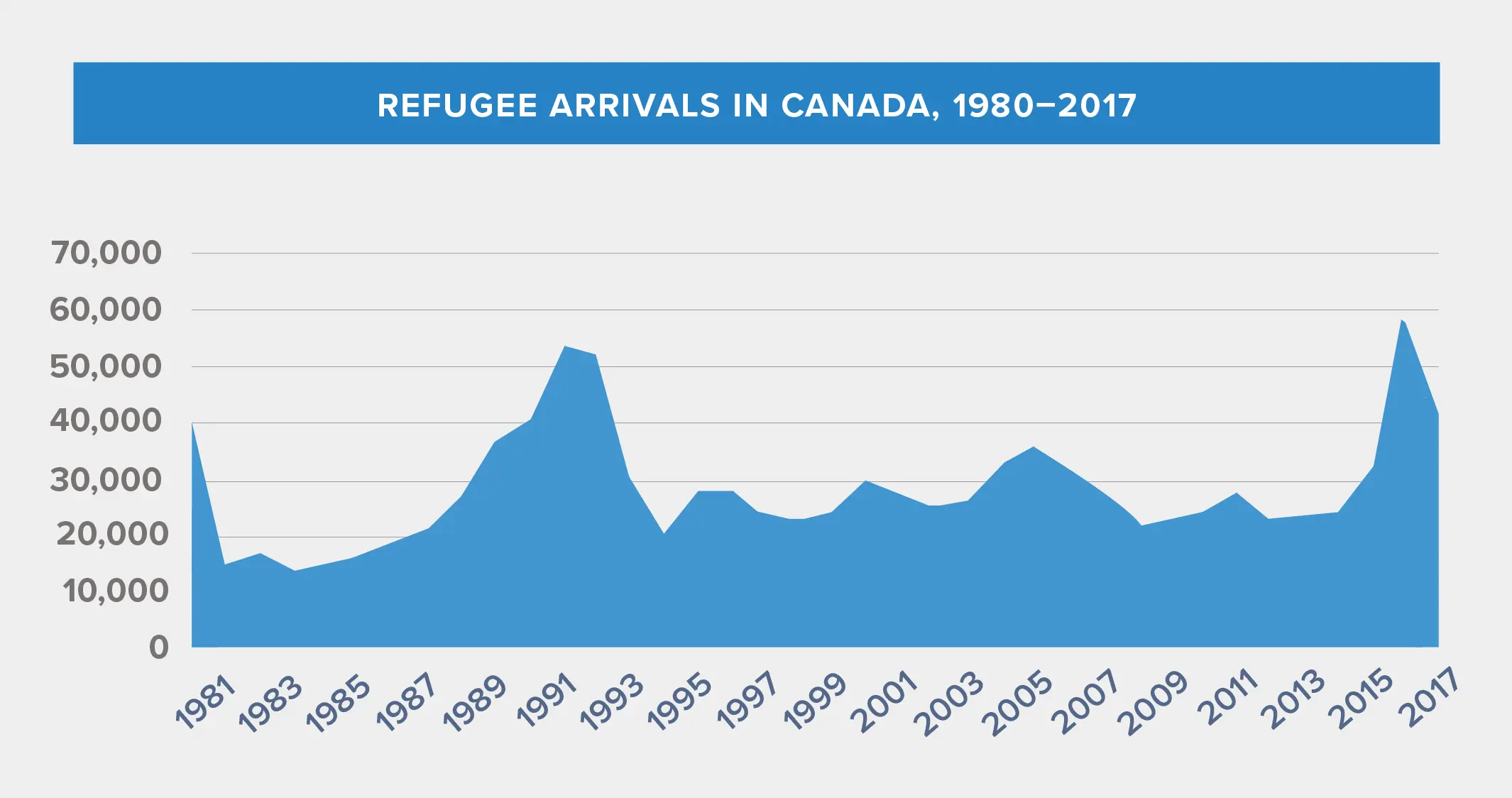Sweden has a lot of space though. And it is one the richest nations in the EU. I'm thinking of Canada now. I wonder how they deal with lots of immigration, huge quantity of land, and not such a huge amount of citizens.
The difference is that Canada recruits most of our immigrants to work in specific areas of the country. IE, we might find a doctor from Serbia and ask them to work in Newfoundland for 5-10 years, as there is a shortage there. My dentist came over from Syria at age 22, and worked for five years in rural Ontario before moving to Ottawa.
We handle refugees differently as well, primarily by relying on established social networks to distribute them to cities where there are already support structures and people of the same groups. That's why Canada has a strong Vietnamese culture spread around most major cities, and why we are growing a strong Syrian culture as well. We have that advantage because we have a big ocean.
Sweden, like Canada, is very big, but the broadest amount of land is frankly uninhabitable, much like in Sweden. Most Canadians live within 100km of the US border, just like most Swedish people live on the Baltic and Skagerrak/Kattegat coast.
21% of people who live in Canada were not born in Canada. This year we will welcome around 300,000 people to Canada. About 1/10th of those will be refugees/asylum seekers. It's a vastly different situation than in Sweden.
The information on Wikipedia for asylum/refugee/immigrants is not up to date for 2020, but I have dug up the following: in 2016, the biggest year for immigration to Sweden, the peak was around 150,000 people coming to the country. This coincided with the largest migration from Sweden peak, over 50,000, so a net swing of 100k.
However, asylum seekers are in general very low, but there was a huge spike in 2015:
Still, none of this precludes the same pressures Maturin describes - immigrants and asylum seekers are younger and have more children (one of the reasons Canada seeks out so many immigrants) and put pressure on city centres where housing is already at a premium.
Pretty much, this looks like a lot of pressure from a large spike that exacerbated the challenges in the system. Whereas Canada's system is very much established and works quite well for what it is - but we have a far larger ability to
choose who comes over. Notice this chart:
You will see that Canada accepted 60,000 refugees in the same timeframe Sweden had 150,000 people who showed up.
A big difference though is we send very, very few refugees
back, whereas Sweden has the ability to send more (though many did stay, probably 2/3).
On a personal front, I regularly agitate with my elected officials to expand our refugee programs to accept closer to double what we normally do, with a stress ability of more than double that for situations like the Syrian Civil War.
So in the end, that while Sweden and Canada have comparable situations in many fronts, Canada's percentage of refugees is lower, at least for now. That may change if the USA overturns Obergefell - I know some people in Foreign Affairs and they project upwards of 500k refugees (from the fucking USA) if that occurs. And of course, even that would be different.
 en.wikipedia.org
en.wikipedia.org



/cloudfront-us-east-2.images.arcpublishing.com/reuters/4ZNIPWPKUZKDJBYK4XRY447SIQ.jpg)


